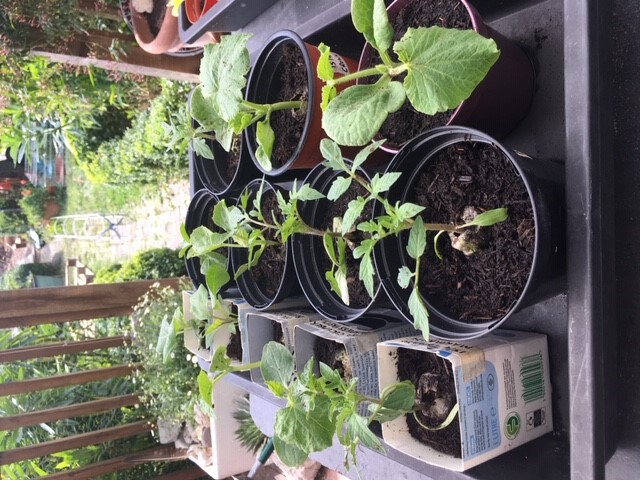
I have never quite swung into filling my greenhouse with seedlings and plants so quickly in a season before. There is an urgency to this year: we have been forced to be less dependent on the supermarkets, but also need to stay in great health. Growing what vegetables we can feels necessary now. But don’t panic if you haven’t got going yet. Here are a few ways to catch up fast.
- Buy tomato plants. It is too late to sow your own tomatoes now, and if you do you will find yourself nurturing them all summer just for the cold weather to cut them down as they start fruiting. Very frustrating! But you can still buy plants. Organic Plants organicplants.co.uk will send them out to you and all you need to do is pot them up and grow them on. If you don’t have a greenhouse, choose cherry tomatoes, which will ripen fastest. Pot into large pots of good peat-free compost, but if you can’t get hold of any then you can plant straight into the ground. They will need a good sturdy support – they somehow always become much bigger plants than you can possibly imagine at the beginning of the season – and lots of feed and water all summer long.
- Grow cut-and-come-again salad leaves, which are wonderfully quick to grow and very nutritious. Source a pack of mixed salad leaves and broadcast sow them across a seed tray or a wide seed drill (if you happen to have just a single variety pack of any salad leaves – lettuce, rocket or chard – you can just use them in the same way). These will be a few inches long and ready to harvest within a matter of weeks. Cut them an inch above the soil and keep them well watered and they will sprout again up to three times before you need to give them up and compost them. If you can remember to re-sow a new batch each time you take the first cut you will provide yourself with a constant stream of fresh salad leaves.
- Plant quick versions. Mange tout are brilliant for a quicker return. They are sown and planted just like peas, but they produce far faster, simply because you are harvesting the pods, not waiting for the peas within them to grow. Sow seeds thickly into pots or direct into the ground at the base of a trellis, obelisk or along a row of shrubby pea sticks pushed into the ground for them to clamber up. Protect the young shoots by covering with more peasticks or some horticultural fleece or even a strip of chicken wire, because otherwise pigeons will come in and eat them all before they have had a chance to get going. Keep them tied in and harvest the pods when young and they will keep producing.
- Harvest baby veg. There is no need to wait until your plants are at the same size as those in the supermarket. In fact, one of the great boons of growing your own is that you get to harvest your crops when they are still babies and are more tender and sweet than those you would normally buy. Harvest carrots, courgettes, radishes, turnips, beetroot when they are little and sweet. The trick with this is to sow little and often, starting now and repeating every few weeks, so you never have a glut and always have more little ones coming along.
- Sow micro greens. These are the very quickest and tastiest of all of the things you can grow for yourself. Thickly sow seeds of strongly flavoured plants and then pick them when they are mere seedlings, using them to flavour up salads and sandwiches, and sprinkle all over your food. Peas, basil, celery, mustards, onion, coriander, will all be ready in a matter of around seven to ten days.










